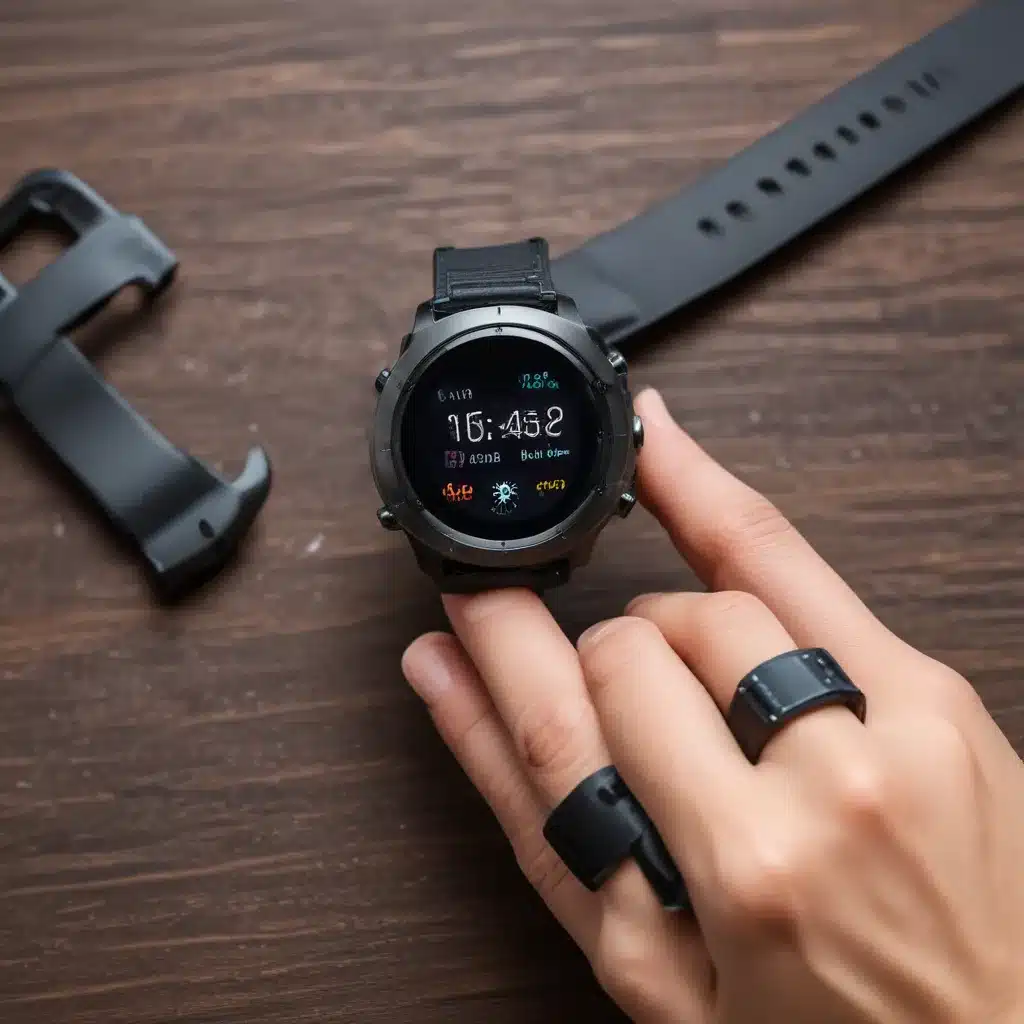Wearables: From Novelty to Necessity
Not too long ago, wearable technology was nothing more than a futuristic concept, something you’d only see in sci-fi movies or the pages of tech magazines. But now, as I walk down the street, I can’t help but notice the array of smart devices adorning the wrists, ears, and even eyes of passersby. What was once a novelty has become a ubiquitous part of our daily lives.
But wearables aren’t just about looking cool or tracking our steps – they’re evolving into powerful tools that are transforming the way we live, work, and interact with the world around us. [1] In fact, the global wearables market is expected to reach a staggering $265 billion by 2026, with the industrial and enterprise sectors leading the charge. [2]
As a self-proclaimed tech enthusiast and the owner of a computer repair service in the heart of London, I’ve had a front-row seat to the rapid advancements in wearable technology. And let me tell you, the future is looking brighter (and smarter) than ever.
The Rise of Intelligent Wearables
Gone are the days of clunky fitness trackers and bulky smartwatches. The latest generation of wearables is sleeker, more powerful, and packed with intelligence that can truly enhance our everyday lives. [3]
Take, for example, the new Honeywell Smart Helmet, designed for industrial workers in rugged environments. [1] This cutting-edge wearable doesn’t just track the user’s vital signs and location – it can also detect potential hazards, monitor environmental conditions, and even communicate with other connected devices on the job site. It’s like having a personal safety assistant strapped to your head.
But the innovation doesn’t stop there. [4] Researchers at the University of California, San Diego have developed a smart tattoo that can monitor the wearer’s glucose levels, heart rate, and other vital signs, all while being virtually undetectable to the naked eye. [5] Imagine a world where your skin could become an interactive canvas, giving you real-time insights into your health and wellbeing.
And let’s not forget about the explosion of smart clothing, where fabrics embedded with sensors and microprocessors are transforming the way we move and interact. [6] A pair of “smart socks,” for instance, could analyze your gait and provide personalized feedback to help improve your running form. Or a jacket that can regulate its own temperature based on the wearer’s body heat and environmental conditions – goodbye, bulky winter coats!
Wearables Across the Globe
As the wearables market continues to expand, we’re seeing innovative applications emerge in every corner of the world. [7] In Africa, for example, researchers are developing smart prosthetic limbs that can respond to neural signals, giving amputees a new level of control and independence. [8] Meanwhile, in Asia Pacific, wearable translation devices are breaking down language barriers, allowing users to communicate seamlessly across cultures. [2]
Europe, too, has embraced the wearables revolution, with companies like Adidas and Philips leading the charge in smart clothing and medical-grade devices. [3] And in Latin America, entrepreneurs are leveraging wearable tech to tackle social challenges, like using GPS-enabled bracelets to help locate missing children. [4]
Even in the Middle East, where the wearables market is still relatively young, we’re seeing promising innovations, such as smart jewelry that can monitor the wearer’s health and provide real-time alerts. [5] And across North America, the applications of wearable tech seem limitless, from virtual reality headsets that transport us to new worlds to smart glasses that overlay digital information onto our physical surroundings. [6]
The Future of Wearables: Seamless Integration and Personalization
As exciting as these advancements are, I can’t help but wonder what the future holds for wearable technology. Will we one day see wearables that are so seamlessly integrated into our lives that they become an extension of our very being? [7]
Perhaps our clothing will be imbued with a vast array of sensors, allowing it to not only monitor our health and fitness but also adapt to our individual needs and preferences. Imagine a shirt that can adjust its temperature and breathability based on your body’s microclimate, or a pair of shoes that can analyze your gait and provide real-time feedback to improve your posture and prevent injury. [6]
Or maybe we’ll see the emergence of wearables that can truly understand and respond to our emotional states, providing comfort, motivation, or even a much-needed laugh when we need it most. [4] After all, as human beings, we crave connection and understanding, and what better way to foster that than through the very technology we wear on our bodies?
Conclusion: Embracing the Wearable Revolution
As I look around at the ever-evolving landscape of wearable technology, I can’t help but feel a sense of excitement and wonder. These smart devices aren’t just about counting our steps or monitoring our heart rate – they’re about unlocking new levels of human potential, empowering us to live healthier, more connected, and more fulfilling lives.
So, whether you’re a fitness enthusiast, a tech-savvy business professional, or simply someone who wants to stay ahead of the curve, I encourage you to embrace the wearable revolution. Who knows what incredible feats you might accomplish with a little help from your new intelligent sidekick. [7]
References:
[1] Honeywell Introduces New Intelligent Wearables for Industrial Field Workers. (2018, May 24). Honeywell. https://www.honeywell.com/us/en/press/2018/05/honeywell-introduces-new-intelligent-wearables-for-industrial-field-workers
[2] Tech Trends in Wearables: Wearable Technology Become Slicker and Smarter. (n.d.). IPC Store. https://www.ipcstore.com/blog/tech-trends-in-wearables-wearable-technology-become-slicker-and-smarter
[3] Wearable technology. (n.d.). TechTarget. https://www.techtarget.com/searchmobilecomputing/definition/wearable-technology
[4] How Smart Wearables Are Shaping Our Future. (2022, September 29). Forbes. https://www.forbes.com/sites/forbesbusinesscouncil/2022/09/29/how-smart-wearables-are-shaping-our-future/
[5] Wearable Textile-based Electrochemical Sensors: A Review. (2020). ScienceDirect. https://www.sciencedirect.com/science/article/pii/S0952197620300348
[6] Smarter Wearables Highlight Demand for Real-Time Fitness Data. (2024). PYMNTS.com. https://www.pymnts.com/news/wearables/2024/smarter-wearables-highlight-demand-for-real-time-fitness-data/
[7] A Survey on Wearable Technology: History, State-of-the-Art and Current Challenges. (2013). IEEE Explore. http://ieeexplore.ieee.org/document/6990838/
[8] National Science Foundation Award Search: Award #2236097. (n.d.). NSF. https://www.nsf.gov/awardsearch/showAward?AWD_ID=2236097&HistoricalAwards=false













